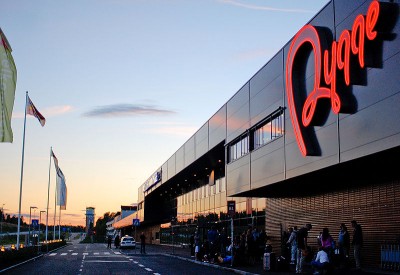The Norwegian government has promised to look into various ways of keeping the Rygge regional airport open and also aiding others not owned by state airports agency Avinor. The goal is to preserve jobs after Rygge’s only commercial customer flies the coop this autumn.

Even though the state has no official responsibility for locally owned airports like Rygge in Moss and Torp in Sandefjord, the government is still fending off turbulence over its new airline passenger seat tax on all flights taking off within Norway. The tax, equivalent to around USD 10, is due to take effect from Wednesday (June 1) and Irish airline Ryanair has blamed it for its decision to shut down its base at Rygge.
Others claim Ryanair likely would have shut its Rygge base anyway, to pursue more growth at Oslo’s main airport at Gardermoen and avoid the high costs of compliance with Norwegian labour law at Rygge. Members of Parliament, however, are calling on the government to examine airport capacity in the outlying areas around Oslo and the roles airports like Rygge and Torp can play.
Rygge’s biggest problem was landing in a position where it utterly relied on just one major customer like Ryanair, often accused of using its market dominance to demand special treatment and avoid taxes. “Politicians and (airport) management are often set up against the people and business in what nearly can resemble extortion from Ryanair,” Hans Christian Kaurin Hansson, a political adviser in the Office of the Prime Minister, wrote to government colleagues in a mail shared with media outlets in Norway. Newspaper Aftenposten reported Tuesday that the government itself wanted to prevent its new tax, justified on environmental grounds as a means of discouraging flying, from getting all the blame for Rygge’s closure.
Looking for new life for Rygge
Now the government will examine whether Rygge could benefit from more military traffic or whether other airlines could replace some of Ryanair’s lost routes. Hans Olav Syversen, who leads the Parliament’s finance committee for the Christian Democrats, told newspaper Dagens Næringsliv (DN) on Tuesday that he was open to dropping construction of another runway at OSL Gardermoen in favour of using Rygge’s airport capacity instead. Syversen represents the Christian Democrats, one of the minority government coalition’s two support parties, and therefore has some clout with the government. MP Svein Flåtten, who joined Syversen in unveiling the government’s approved revised budget at mid-year on Monday, confirmed to DN that the government “will address these issues (with Rygge) in line with the ordinary state budget this fall.”
Officials at OSL Gardermoen, meanwhile, were downplaying a recent report in DN that they were considering devoting a large gate area to low-fare carriers like Ryanair. Even though OSL chief Øyvind Hasaas confirmed a low-fare terminal was under consideration, his remarks were not well-received by officials at Avinor: “It looked like we were dancing on the grave of Rygge,” one Avinor employee told DN.
Tax isn’t curbing air traffic
There’s no question OSL is open to more routes, not least from new airlines, as its major terminal expansion becomes available next year. The new tax doesn’t seem to be putting any damper on new routes from existing OSL carriers either, despite threats from airlines like SAS and Norwegian Air that it would lead to lower passenger demand and reduce profitability.
Aftenposten reported over the weekend for example that SAS alone is adding 270,000 seats to its winter program in the Norwegian market, amounting to 1,500 packed SAS flights. An SAS spokesman had no apologies, claiming the airline was still tense about what passenger reaction to the new tax will be once it’s imposed.
Charter tour operators are sending passengers who’ve already paid for flights after June 1 extra bills for NOK 88 to cover the cost of the new tax. SAS has announced it won’t do that, while Norwegian has been undecided.
Environmental groups, meanwhile, have noticed how the new tax hasn’t cut air traffic or its carbon emissions much at all. They’re already calling for the tax to be raised dramatically, if it’s to have its desired effect as a means of helping reduce climate change.
newsinenglish.no/Nina Berglund

